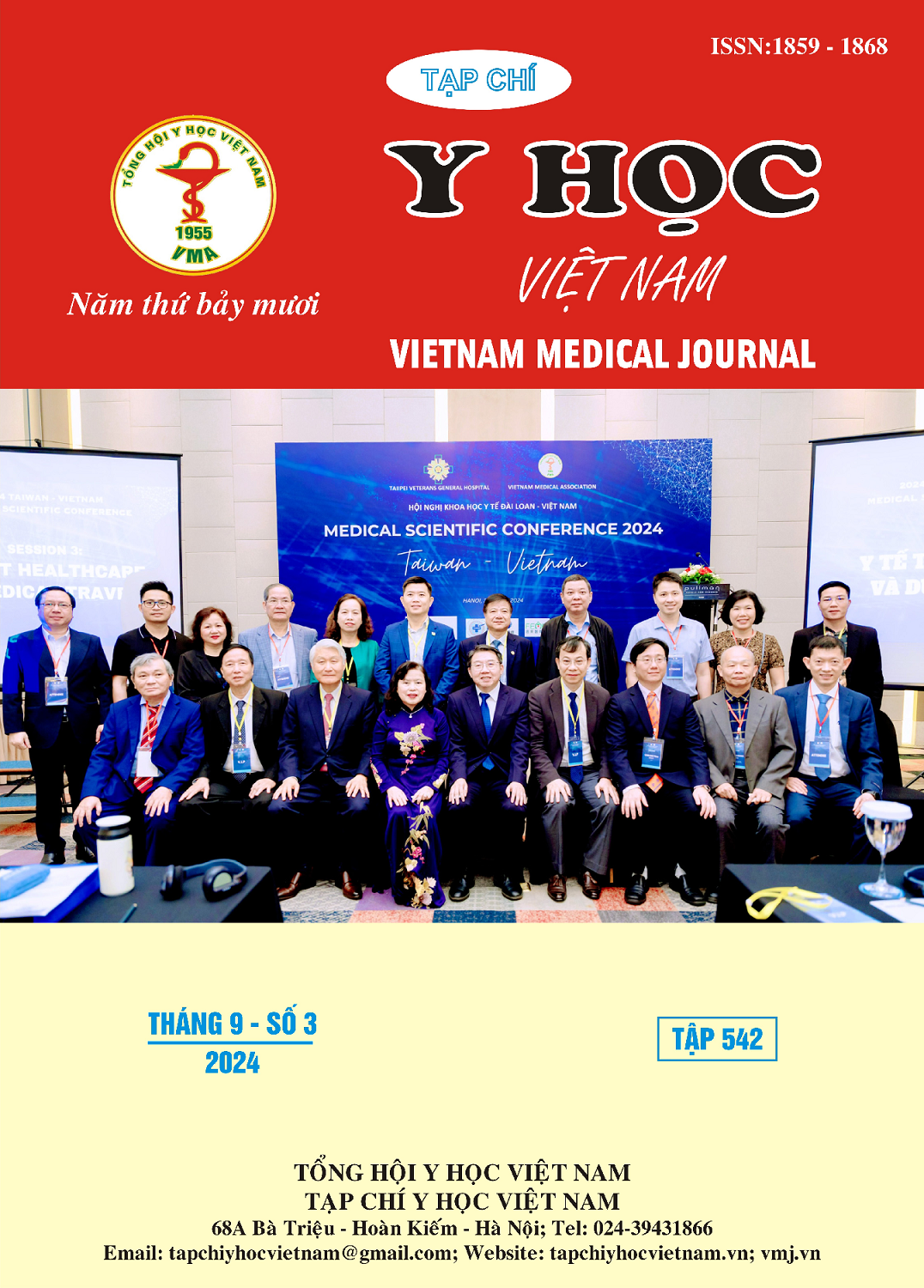SURGICAL TREATMENT OF EXTRACRANIAL CAROTID ARTERY STENOSIS AT CHO RAY HOSPITAL: 10 YEARS EXPERIENCE
Main Article Content
Abstract
Introduction: Carotid endarterectomy has been proven for many years worldwide to be a safe and effective treatment method. Although there have been many studies evaluating the results of carotid endarterectomy, there are currently few studies evaluating the long-term results of surgery. Objective: To assess the short-term, mid-term and long-term outcomes of carotid artery stenosis treated with carotid endarterectomy. Patients and methods: A retrospective descriptive case series was conducted from March 2012 to December 2022 at the Vascular Surgery Department of Chợ Rẫy Hospital. Results: During the period from 2012 to 2022, we performed 294 cases of carotid endarterectomy. The average age was 67.3 (52-91). The male/female ratio was 5.6/1. 82.7% of patients had symptoms of carotid artery stenosis at admission, 85.7% of patients had severe stenosis of the carotid artery on the surgical side on computed tomography. 68% of patients were given general anesthesia; carotid shunting was performed in 23,9 % of patients. Carotid endarterectomy was performed using the inversion technique in 218 cases (74.1%), 46 cases (15.6%) underwent with conventional plus patch angioplasty, the remaining cases (10.3%) were incised longitudinally and sutured directly. Early results: there were 8 (2.7%) cases of cerebrovascular accident, of which 3 (1%) cases died, myocardial infarction had 2 cases (0.83%). After 1-5 years of follow-up, all patients had good clinical symptoms, and there were 7 (2.4%) cases of restenosis. Conclusion: Carotid endarterectomy is a safe and effective treatment method with low rates of adverse events and complications. The rates of restenosis and cerebrovascular accidents during medium and long-term follow-up are very low.
Article Details
Keywords
hẹp động mạch cảnh, phẫu thuật bóc nội mạc động mạch cảnh.
References
2. Lewis SC. General anaesthesia versus local anaesthesia for carotid surgery (GALA): a multicentre, randomised controlled trial. Lancet. 2008: 372: p.2132–42.
3. Naylor R, Rantner B, Ancetti S, et al. Editor's Choice – European Society for Vascular Surgery (ESVS) 2023 Clinical Practice Guidelines on the Management of Atherosclerotic Carotid and Vertebral Artery Disease. European Journal of Vascular and Endovascular Surgery. 2023;65(1): 7-111. doi:10.1016/j.ejvs.2022.04.011
4. AbuRahma AF, Mousa AY, Stone PA. Shunting during carotid endarterectomy. Journal of vascular surgery. 2011;54(5):1502-1510.
5. Wiske C, Arhuidese I, Malas M, Patterson R. Comparing the efficacy of shunting approaches and cerebral monitoring during carotid endarterectomy using a national database. J Vasc Surg. Aug 2018;68(2):416-425. doi:10.1016/ j.jvs.2017.11.077
6. Levin SR, Farber A, Goodney PP, et al. Shunt intention during carotid endarterectomy in the early symptomatic period and perioperative stroke risk. J Vasc Surg. Oct 2020;72(4):1385-1394.e2. doi:10.1016/j.jvs.2019.11.047
7. Paraskevas KI, Robertson V, Saratzis AN, Naylor AR. Editor's Choice - An Updated Systematic Review and Meta-analysis of Outcomes Following Eversion vs. Conventional Carotid Endarterectomy in Randomised Controlled Trials and Observational Studies. Eur J Vasc Endovasc Surg. Apr 2018;55(4):465-473. doi:10.1016/j.ejvs.2017.12.025
8. Schneider JR, Helenowski IB, Jackson CR, et al. A comparison of results with eversion versus conventional carotid endarterectomy from the Vascular Quality Initiative and the Mid-America Vascular Study Group. J Vasc Surg. May 2015;61(5): 1216-22. doi:10.1016/ j.jvs.2015.01.049
9. Đỗ Kim Quế, Đào Hồng Quân. Phẫu thuật bóc lớp trong động mạch cảnh: kinh nghiệm 1200 trường hợp tại một trung tâm. Tạp chí Phẫu thuật Tim mạch và Lồng ngực Việt Nam. 02/01 2021;30:83-89. doi:10.47972/vjcts.v30i.478


